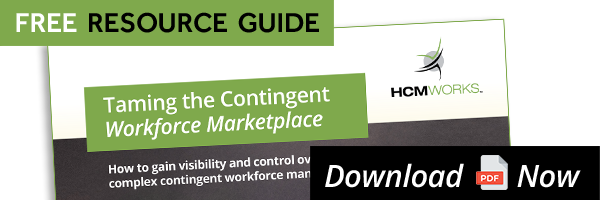If your company is like the other millions of organizations in the United States jumping on board with the contingent workforce, then you need to prioritize your contingent labor management today. With an increasing number of contingent workers making up your total workforce, it’s only going to get more complex, confusing, and risky to manage these workers without effective management processes and the right technology in place to help. You won’t be able to minimize costs, reduce risks, or ensure optimal productivity with disjointed, disorganized management processes.
You need to adopt appropriate contingent labor management today—here’s why.
The Risk of Misclassification Is Huge
Managing contingent workers is a lot more risky than managing typical employees who are on your payroll. You need separate management processes for these workers—you can’t treat them like they’re employees, no matter how inconvenient or unfair it might be. You can’t provide them with tools and equipment, you can’t train them, you can’t pay them for overtime, you can’t add them to your incentive programs or give them additional rewards, or even give them access to your company gym. Why? Because then the U.S. Department of Labor and the IRS might consider them to be employees, which means you’ll be hit with tons of fines, penalties, and fees for worker misclassification.
The more contingent workers you have on the staff, the bigger your risks will be, and in turn, the bigger your fines and penalties might be. As many workers fall into a gray area where they could be classified as either contractor or employee, you need to make sure you’re always making the right call. And you need to make sure that if the situation changes, that you adjust your management style and paperwork to reflect current circumstances. This can be incredibly difficult to keep track of and do properly without effective contingent labor management. And since the U.S. government is now cracking down on cases of misclassification more diligently than ever before, it’s critical that you prioritize effective contingent labor management now.
Payments Can Be Complex
You pay your contingent workforce through a separate process—they aren’t on your typical payroll like the rest of your employees. And each independent contractor will likely be paid at a different rate, and on a different schedule, which means you could easily lose track of who you’ve already paid, who you need to pay, and how much you need to dish out and when. You might not even be able to keep track of all of your contracts with your workers for reference if you don’t have effective contingent labor management processes in place.
You also won’t be able to effectively budget your spend on your contingent workforce when you have no visibility and can’t keep track of your payments to these workers. But contingent labor management will give you the insights, efficiency, and organization you need to be on top of contingent workers’ payments so you can ensure they’re being paid correctly and on time, and so you can avoid costly errors and wasted time through disorganized payment processes.
You Need to Be Able to Measure Performance
How will you get the best value for your dollar if you can’t measure your contingent workers’ performance? You won’t be able to know until it’s too late if problems arise or if you’re paying a high price for subpar work. This will only lead to higher costs for poor value. To be able to track, measure, and analyze their performance, you need workforce data. You need the right key performance indicators and metrics in place to truly understand how your workers are performing. Such data can give you the insights you need to make more informed hiring, staffing, and scheduling decisions to ensure that optimal productivity is being met to your standards and based on the contracts you’ve signed with your contingent workers.



